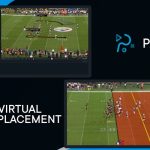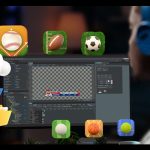Carol Bettencourt explores the advancements in graphics fulfilment and efficient data integration in modern newsrooms.
Over the past two decades, the task of graphics fulfilment has gradually moved into the broadcast newsroom, where stories are created, and the ongoing adoption of MOS (media object server protocol) workflows has introduced new efficiencies in bringing those stories to air. Integration of graphics and CG systems with leading newsroom computer systems (NRCS) has been empowering for producers and journalists, who can simply select graphics templates, insert text, images or clips, and add them directly to their stories in the NRCS MOS rundown.
While this MOS-enabled graphics model has been vital in enabling quick turnaround of news stories, even greater efficiency and agility in handling increasing volumes of data is proving critical in the modern newsroom. Whether for politics and elections, sports, weather or community health reporting, producers and journalists today have access to massive amounts of data: predictions, polls and election results; stats on every aspect of a game or a player’s performance; information on drought, flood zones and other climate events; details of Covid-19 and other health concerns; and much more.
Enhancing visuals across the newscast
How can a broadcaster help viewers make sense of all this information? Graphics play an essential role in parsing and prioritising information. In addition to engaging the viewer, they clarify and impose order. And when the broadcaster’s NRCS is integrated with a MOS-driven graphics system equipped with robust data handling capabilities, it becomes easy for producers and journalists to infuse their storytelling with dynamic, engaging data.
Whether presented in an on-air graphic such as a lower-third or video wall, on a virtual set or with an augmented reality element, the data itself can work with logic to determine how these visual elements are displayed at any given moment. The data-handling capabilities of the modern CG can be leveraged within the familiar graphics workflow driven by the NRCS, to efficiently feed data into every element. Databinding to scene elements enables easy visualisation of data to showcase real-time events as they unfold. Logic-based scenes function as editable templates that can refresh up-to-the-second based on data feeds and trigger controls.
With greater flexibility and efficiency in presenting data-driven graphics, producers and the larger organisation can streamline their workflow, focus on storytelling and deliver captivating news content that engages and leaves a lasting impact on viewers. This is a critical differentiator when broadcasters have so many more ways to enrich their stories – and the studio environment – with visual displays of data.
Doing more with more
It’s not just the weather person who presents using data-driven graphics and touchscreen controls, though those graphics have evolved dramatically – augmented reality elements and virtual sets present tremendous creative opportunities for dynamic visuals illustrating changing weather conditions. For sports reporting in a green screen environment, automatically updated stats on a pop-up or dropdown leaderboard add interest and a connection to live play. On election night, this might be useful in displaying an AR bar graph, perhaps growing up out of the floor, showing vote counts. The possibilities are endless.
In addition to fulfilling certain graphics template fields or elements with data, or causing a graphical element to shrink, grow or change colour in response to changing data, an advanced graphics system also enables auto-population of a template with media assets based on metadata. A graphic that includes a headshot of a local newsmaker plus their name and title can thus be automatically populated with text and an image from the media asset manager, then edited by the journalist as needed. (While data is typically sourced from a database, third-party data provider or CSV file, a manual over-ride can allow the producer or journalist to enter data.) This is a further efficiency that speeds time to air and frees up time to focus on other aspects of storytelling.
Because data can dynamically populate graphics, updating in real time, producers and journalists have the option of configuring completely automated visual elements, or setting up manual updates with control over when and where the latest data is revealed. On election night, rather than enable immediate visually distracting changes to that vote count bar graph as new data comes in, the presenter might instead trigger the update manually as they explain fresh results.
Finally, having improved their capacity to enrich news stories and presentation with graphics that inform and illustrate, broadcasters also benefit from looking downstream. If the branding engine used to overlay additional content such as school closings, emergency information, headlines and stock tickers leverages the same design engine as the CG, then it’s likely the same data integrations and tools can be used to support and display those elements in coordination with the rest of the newscast.
Leveraging data capabilities to connect
With more powerful data-handling capabilities and improved efficiency to match, broadcasters have a greater capacity to drive both newer and traditional visual elements as part of a cohesive storytelling environment. It’s easier and less time-intensive than ever. With a data-driven, producer-friendly interface for creating graphics, producers and journalists can present visuals that adapt to events in real time, draw viewers’ attention to the most important information, make sense of large volumes of data and break through the noise to connect with audiences in a meaningful way.
 Carol Bettencourt is Vice President of Marketing at Chyron.
Carol Bettencourt is Vice President of Marketing at Chyron.















































































